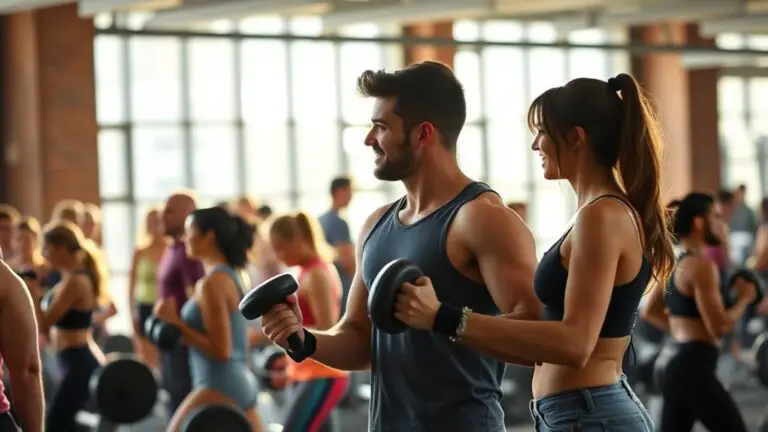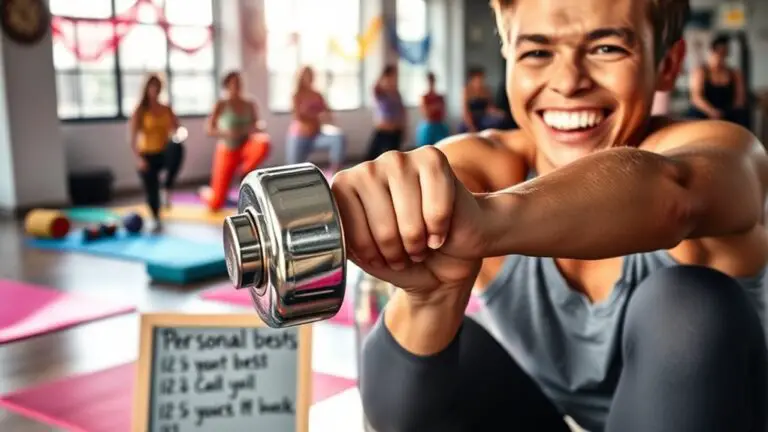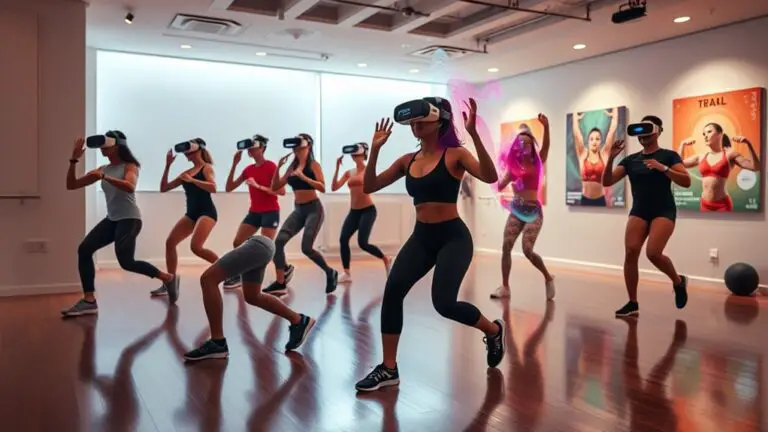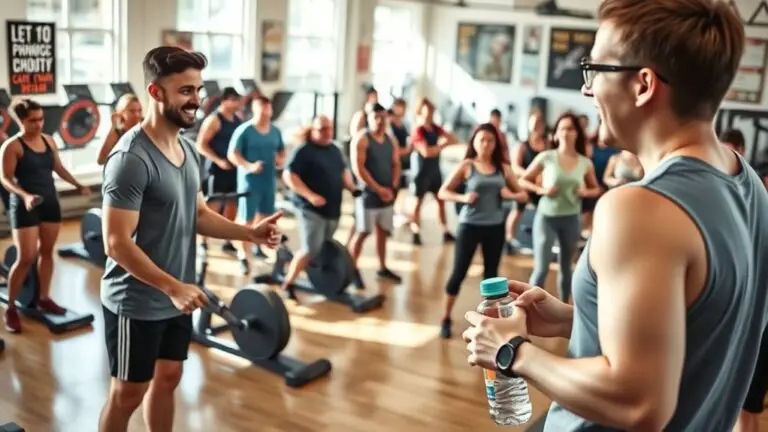The Best Gym Routine for College Students With Heavy Course Loads
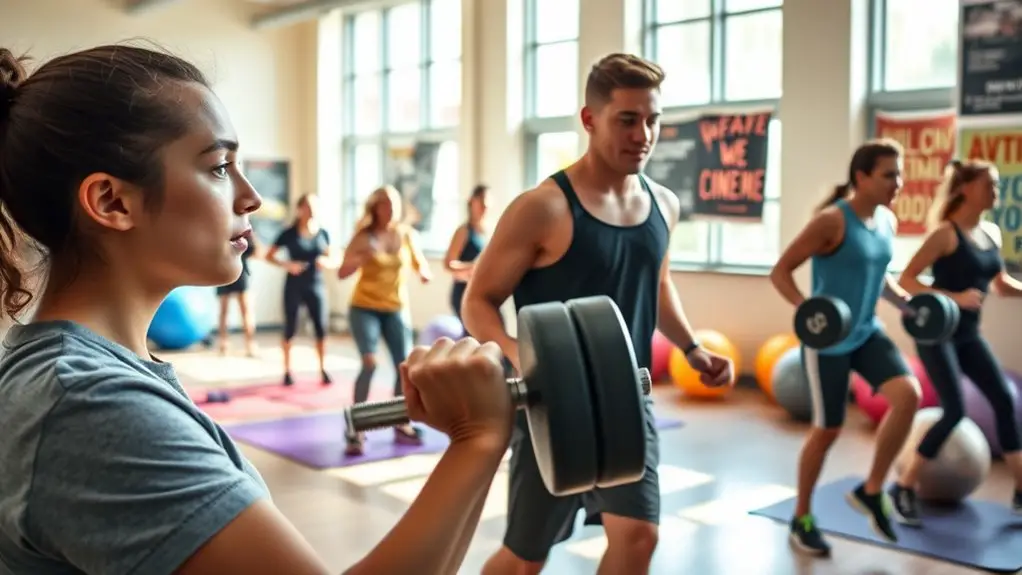
To maintain fitness with a heavy course load, focus on short, efficient workouts. Incorporate HIIT sessions lasting just 20-30 minutes for maximum impact, blending cardio and strength training. Utilize campus facilities during off-peak hours and plan your workouts around your class schedule. Active study breaks, like quick stretches or brisk walks, help refresh your mind. Pairing your routine with nutritious meal prep keeps you energized. Stick around to discover more strategies for balancing fitness and academics effectively.
Understanding the Importance of Fitness for Students
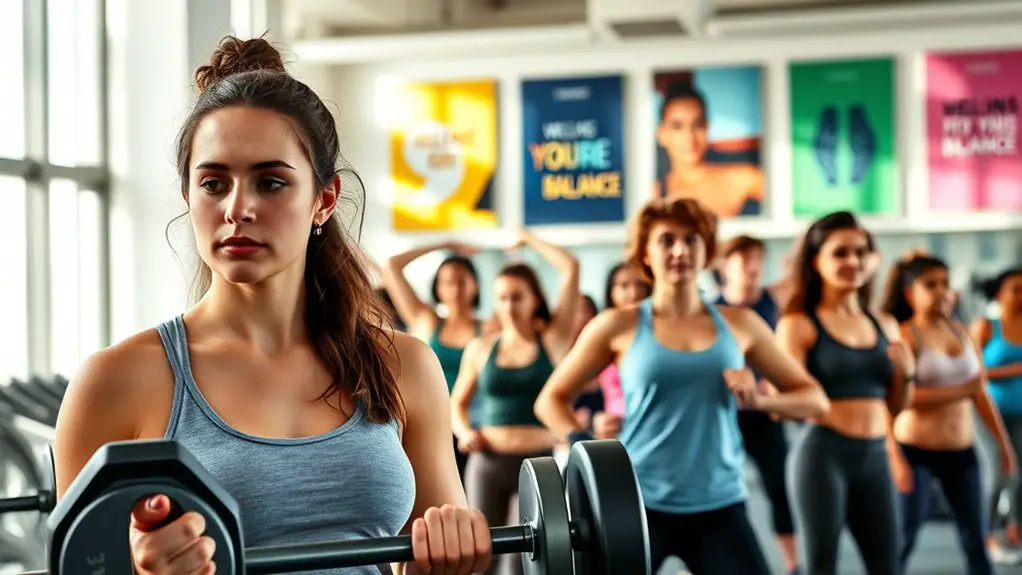
When you’re juggling classes, studying, and social life, it’s easy to overlook the importance of fitness, but staying active is essential for your overall well-being. Engaging in regular physical activity offers numerous fitness benefits that can enhance your academic performance. Exercise boosts your energy levels, helping you tackle those lengthy study sessions more effectively.
Additionally, working out is a powerful stress relief tool. When you’re feeling overwhelmed by deadlines and exams, a quick workout can clear your mind and improve your mood. The endorphins released during exercise act as natural mood lifters, helping you combat anxiety and enhance your focus. Incorporating activities like skipping rope into your routine can further improve your cardiovascular fitness and overall well-being.
Incorporating fitness into your routine doesn’t have to be complicated. Just a few sessions a week can make a significant difference in your mental clarity and emotional balance. Prioritizing fitness not only supports your physical health but also creates a solid foundation for academic success.
Time-Efficient Workout Strategies
Even if your schedule is packed with classes and assignments, you can still fit effective workouts into your day. The key lies in efficient scheduling. Try to identify short windows, like 20-30 minutes between classes, where you can squeeze in quick workouts. These don’t have to be lengthy gym sessions; instead, focus on exercises that require minimal equipment, like bodyweight exercises or resistance bands.
Consider planning your workouts ahead of time. This way, you’ll know exactly what you’re doing and won’t waste precious minutes deciding. High-rep circuits or compound movements can maximize your time and target multiple muscle groups simultaneously. Also, consider using apps or online videos that offer quick, guided routines, making it easier to stay on track. Incorporating activities like skipping rope can effectively engage multiple muscle groups and elevate your heart rate in a short amount of time.
Incorporating High-Intensity Interval Training (HIIT)
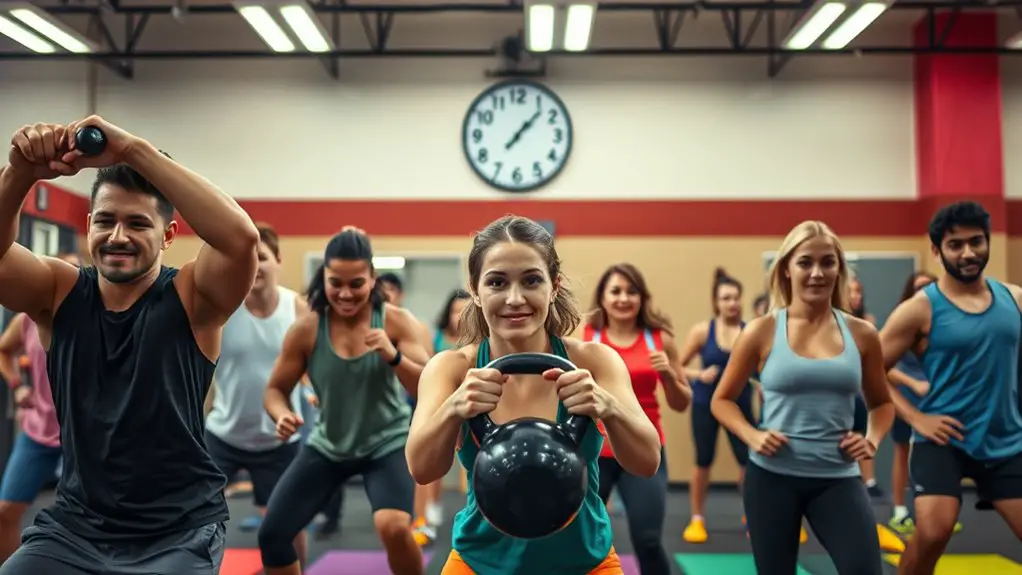
While fitting workouts into a busy college schedule can be challenging, incorporating High-Intensity Interval Training (HIIT) can be a game-changer. HIIT allows you to maximize your workout in a short amount of time, making it perfect for your packed agenda. You can complete a session in as little as 20-30 minutes while still reaping significant HIIT benefits, like improved cardiovascular fitness and fat loss.
To get started, try techniques like sprinting for 30 seconds followed by a minute of walking or cycling. You can also explore bodyweight exercises, alternating between high-intensity moves like burpees and lower-intensity recovery periods. This keeps your heart rate up and burns more calories in less time. Additionally, incorporating jump rope workouts can elevate your heart rate and provide a fun, full-body workout experience.
The Benefits of Strength Training
Strength training isn’t just about building muscle; it can also boost your mental health and help you manage your time better. By committing to a regular routine, you’ll see increased muscle mass, which can enhance your overall energy levels and confidence. Plus, the discipline you develop in the gym often translates to improved focus in your studies. Incorporating effective cardio workouts such as skipping rope can further enhance your fitness routine and aid in weight loss.
Increased Muscle Mass
As you immerse yourself in your college routine, building increased muscle mass through strength training can offer numerous benefits that extend beyond just physical appearance. Enhanced muscle mass not only boosts your metabolism but also aids in muscle recovery after those intense study sessions or workouts. By incorporating proper workout nutrition—like protein-rich meals and hydration—you’ll fuel your body effectively, optimizing your gains. This means quicker recovery times, allowing you to hit the gym more frequently despite your demanding schedule. Furthermore, increased strength improves your overall performance in daily activities, making them feel easier and less taxing. So, make strength training a key part of your routine, and watch your body and productivity thrive amidst your college challenges.
Enhanced Mental Health
Building muscle isn’t just about physical gains; it’s also closely tied to your mental well-being. When you engage in strength training, you’re not just boosting your physique but also enhancing your mental clarity. Regular workouts release endorphins, which help combat stress and anxiety, providing a natural mood lift. As a college student juggling heavy coursework, incorporating strength training can be a game-changer for stress reduction. You’ll find that after a solid workout, you’re better equipped to tackle assignments and study more effectively. Plus, the sense of accomplishment from lifting weights can boost your confidence, making academic challenges feel more manageable. Prioritizing strength training in your routine can profoundly impact both your mind and body, leading to a healthier college experience.
Improved Time Management
When you incorporate strength training into your busy college schedule, you’ll likely find that your time management skills improve greatly. By committing to regular workouts, you’ll naturally start to practice time blocking, allocating specific periods for your fitness routine and other responsibilities. This structured approach helps you stay focused and reduces procrastination, making you more productive in your studies.
Moreover, strength training encourages priority setting. As you learn to balance workouts with coursework, you’ll identify what’s most important and tackle tasks efficiently. The discipline gained from your fitness regimen often translates into better academic performance and personal organization. All in all, embracing strength training not only boosts your physical health but also sharpens your time management skills, making college life more manageable.
Choosing Compound Exercises for Maximum Impact
Choosing the right compound exercises can greatly enhance your gym routine, especially if you’re juggling classes and social commitments. Compound exercises, like squats, deadlifts, and bench presses, work multiple muscle groups at once, providing significant compound exercise benefits. This means you can build strength and muscle effectively, even with limited time.
Incorporating these movements into your routine allows you to maximize your workout efficiency. Instead of spending hours at the gym, you can achieve more in shorter sessions. Aim for effective workout routines that include 2-3 compound exercises per session, focusing on different muscle groups. Additionally, including exercises like reverse curls can help target specific muscle groups while maintaining overall balance in your training.
Not only will you save time, but you’ll also boost your metabolism and improve overall functional fitness, which is essential for keeping up with your busy lifestyle. Remember to maintain proper form to prevent injury and consider varying your exercises to keep things fresh and engaging.
Creating a Flexible Workout Schedule
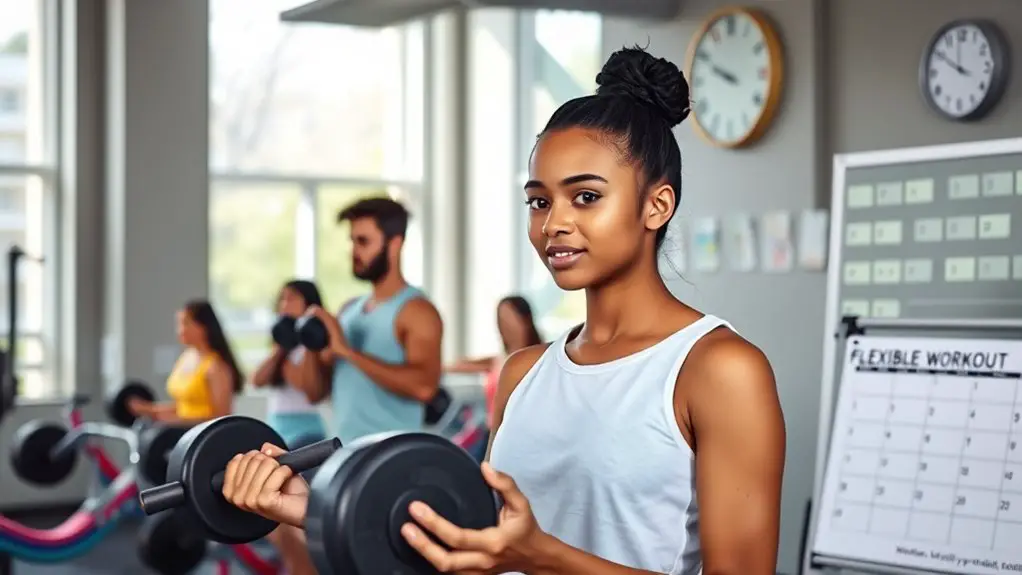
Maximizing your workout efficiency with compound exercises is just the first step in establishing a sustainable gym routine. To truly thrive, you need flexible scheduling that accommodates your busy college life. Consider creating personalized routines that fit into your changing schedule. Here’s a simple table to help you plan your workouts around your classes and study time:
| Day | Workout Type | Time Slot |
|---|---|---|
| Monday | Full Body Strength | 5 PM – 6 PM |
| Wednesday | Cardio + Core | 4 PM – 5 PM |
| Friday | Upper Body Focus | 3 PM – 4 PM |
| Saturday | Active Recovery | 10 AM – 11 AM |
| Sunday | Flexibility & Mobility | 1 PM – 2 PM |
Utilizing Campus Facilities and Resources
Take advantage of your campus gym’s hours to fit workouts into your busy schedule; they’re often more flexible than you’d think. Many schools also offer group fitness classes that can make exercising more fun and social. Check out the schedule and find a class that sparks your interest to keep you motivated! Additionally, participating in open gym sessions can provide a great opportunity to practice skills and socialize with fellow students.
Campus Gym Hours
Campus gym hours can greatly influence your workout routine, so knowing when the facilities are open is vital for making the most of your fitness journey. With busy student schedules, it’s important to maximize gym accessibility. Here are a few tips to help you navigate the hours effectively:
- Check the weekly schedule: Most campus gyms post their hours online or on bulletin boards.
- Consider peak times: Plan your workouts during off-peak hours to avoid crowds and wait times.
- Utilize early mornings or late evenings: If your classes allow, these times often offer quieter gym environments.
- Look for extended hours during exam weeks: Many gyms adjust their schedules to accommodate students during finals.
Group Fitness Classes
If you’re looking to add variety to your workout routine, group fitness classes can be a fantastic option. These classes not only keep you motivated but also help you meet new friends. Your campus likely offers a range of options, from Zumba classes to Yoga sessions, ensuring there’s something for everyone.
Here’s a quick overview of popular classes:
| Class Type | Benefits | Schedule Frequency |
|---|---|---|
| Zumba classes | Fun dance workout, boosts mood | 3 times a week |
| Yoga sessions | Improves flexibility, stress relief | 2 times a week |
| Spin classes | High-intensity cardio, builds endurance | 4 times a week |
| Boot camp | Total body workout, team spirit | 2 times a week |
Try out different classes, and find what you love!
Incorporating Active Study Breaks
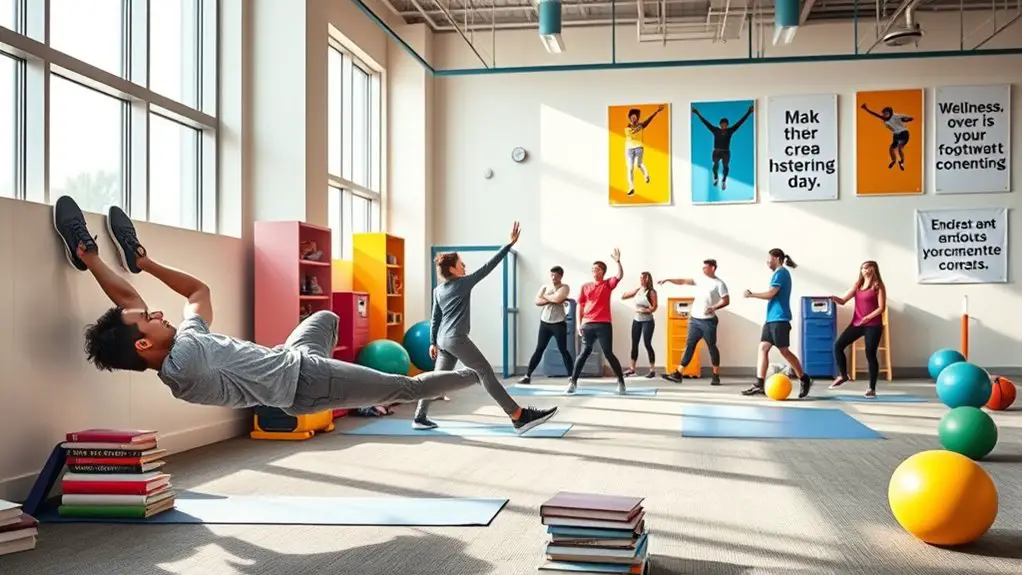
While studying for exams or working on projects, it’s easy to lose track of time and neglect your physical health. Incorporating active study breaks not only enhances your focus but also integrates fitness into your routine. These breaks can transform your study sessions into opportunities for active learning and fitness integration.
Consider these ideas for your active study breaks:
- Stretching: Take five minutes to stretch your muscles, improving blood flow and reducing tension.
- Quick Workouts: Do a short, high-intensity workout like jumping jacks or push-ups to get your heart rate up. For an even more effective approach, you could incorporate jumping rope, which can burn approximately 100 calories in just 10 minutes.
- Walking: Step outside for a brisk walk, rejuvenating your mind while getting some fresh air.
- Mindfulness: Practice a few minutes of meditation or deep breathing to center yourself and relieve stress.
Balancing Nutrition With a Busy Lifestyle
Staying active during study sessions is just one part of maintaining your overall health; balancing nutrition is equally important, especially when juggling classes, assignments, and social activities. To make healthy eating easier, consider meal prepping. Dedicate a few hours each week to cook and portion out meals. This way, you’ll have nutritious options ready to grab on busy days, minimizing the temptation to reach for junk food.
In addition to prepping, practice mindful eating. Focus on your meals without distractions, like scrolling through your phone or studying. This helps you appreciate your food more and recognize when you’re full, preventing overeating. Incorporating fruits, vegetables, and whole grains into your meals not only fuels your body but also enhances your focus and energy levels. By combining meal prepping with mindful eating, you can maintain a balanced diet even with a hectic college schedule.
Staying Motivated and Accountable

Motivation can sometimes wane, especially when balancing classes and social life, but finding ways to stay accountable can make all the difference in sticking to your gym routine. Here are some effective strategies to help you stay motivated:
- Set clear goals: Break down your fitness objectives into manageable, short-term goals that keep you focused and driven.
- Find a workout buddy: Team up with a friend who shares similar fitness goals. Peer support can boost motivation and make workouts more enjoyable.
- Track your progress: Use a journal or an app to monitor your workouts and celebrate achievements, no matter how small.
- Mix it up: Keep your routine fresh by trying new exercises, classes, or sports, which can rekindle your enthusiasm for the gym. Additionally, engaging in social opportunities at the gym can enhance your experience and provide motivation to stay consistent with your routine.
Frequently Asked Questions
How Can I Stay Motivated During Exam Periods?
Staying motivated during exam periods can be tough. Use study breaks to incorporate quick workouts or stretches. Fitness apps can help you track progress, making it easier to stay engaged and energized amid your studies.
What Are Effective Pre-Workout Snacks for Energy?
Oh, the eternal quest for the perfect pre-workout snack! You can’t go wrong with energy bars or protein shakes; they’re like little miracles in a wrapper. Fuel up, and watch your fitness dreams take flight!
How Do I Find Workout Buddies on Campus?
To find workout buddies on campus, check out fitness events or use social media platforms. Post in groups or forums, and don’t hesitate to attend classes; you’ll meet like-minded individuals enthusiastic to partner up!
Can I Workout Effectively With Limited Gym Equipment?
Absolutely, you can workout effectively with limited gym equipment! Bodyweight exercises and resistance bands are fantastic options. They build strength, improve flexibility, and can be done anywhere, making your fitness routine both accessible and versatile.
What Are Some Quick Recovery Tips After Workouts?
After workouts, you should prioritize foam rolling to ease muscle tension and improve flexibility. Don’t forget hydration strategies; drinking water or electrolyte drinks replenishes fluids, speeding up recovery and keeping you energized for your next session.
